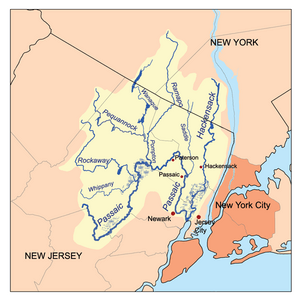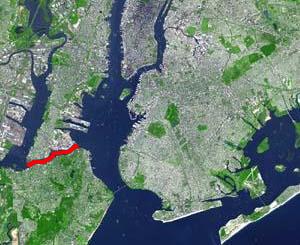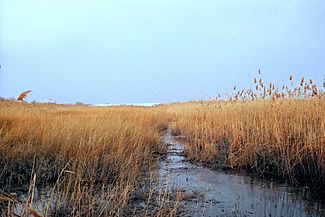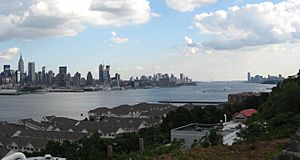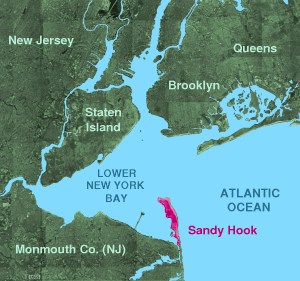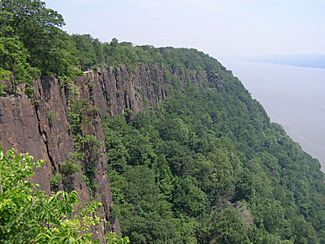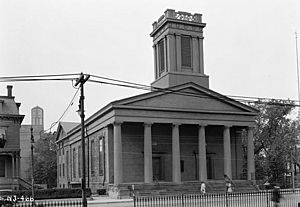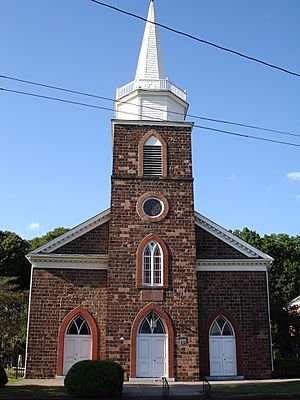List of Bergen, New Netherland placename etymologies facts for kids
Bergen was a part of the old Dutch colony called New Netherland. This was in the 1600s, in what is now northeastern New Jersey. Many place names here came from Algonquian Lenape words or Dutch words.
When Europeans first settled here, the land belonged to Native American tribes. These included the Acquackanonk, Raritan, Tappan, and Hackensack tribes. The Munsee lived in the northwestern parts, and the Wappinger lived in the Hudson Valley. The Dutch often named these groups after places in their territory. This created names that we still use today. Both the Lenape and the Dutch often named places based on the land itself. They described shapes, locations, or special features.
The Lenape people did not have a written language. The Europeans, whom the Lenape called Swannekins (meaning Salt Water People), wrote down the Lenape words they heard. They used the Latin alphabet. These spellings were likely influenced by Dutch, which was the main language spoken in the colony. Some of these names are still used today. Their spelling and how they are said have changed over the last 400 years into American English.
Sometimes, it's hard to know if a name came from Dutch or Lenape. Different old records don't always agree. Also, Lenape words can have many meanings. The way a name ends can change depending on the Lenape dialect spoken. Jersey Dutch was a language spoken in this area until the 1900s.
Contents
- Exploring Place Names in New Jersey
- Acquackanonk
- Achter Col
- Arresick
- Arthur Kill
- Bedloe's Island
- Bergen
- Caven Point
- Communipaw
- Constable Hook
- Cromakill
- Cresskill
- Deep Voll
- Dwars Kill
- Dunkerhook
- English Neighborhood
- Hackensack
- Harsimus
- Haverstraw
- Hoboken
- Houvenkopf
- Kill van Kull
- Kinderkamack
- Losen Slote
- Mahwah
- Manhattan
- Meghgectecock
- Minkakwa
- Moonachie
- North River (Noort Rivier)
- Outwater
- Overpeck
- Pequannock
- Pamrapo
- Paramus
- Pascack
- Passaic
- Polifly
- Pompton
- Paulus Hook
- Preakness
- Ramapo
- Raritan
- Sand Hoek
- Schraalenburgh
- Secaucus
- Sicomac
- Staaten Eylandt
- Tantaqua
- Tappan
- Teaneck
- Tenafly
- Watchung
- Weehawken
- Weequahic
- Vriessendael
- Early Dutch Churches in New Jersey
- See also
Exploring Place Names in New Jersey
Let's look at some of the interesting place names from New Netherland. Many of these names are still used today in New Jersey.
Acquackanonk
This name comes from an Unami Lenape group. They lived along the Passaic River. The name means a place in a rapid stream where fishing is done with a net. Another idea is at the lamprey stream. You might see it spelled as Achquakanonk or Acquackanonk.
Acquackanonk Township was one of New Jersey's first townships, created in 1683. Over the years, parts of it became other towns like Paterson and Clifton. A bridge here was burned in 1776. This happened when General George Washington's army was retreating during the American Revolution.
Achter Col
This name described the area around Newark Bay. Achter means behind, and kol means neck. So, it means the back of the peninsula, referring to Bergen Neck. The name is not used much today. However, it likely changed into Arthur Kill, which is another waterway nearby.
Arresick
This was once a small tidal island. It was the first place where a ferry landed for the Pavonia settlement. Arresick can mean burial ground. This island is now part of the Paulus Hook area in Jersey City. It was connected to the mainland using landfill.
Arthur Kill
This is a tidal strait (a narrow water passage) that separates Staten Island from mainland New Jersey. The word kille means water channel in Dutch. This name probably came from Achter Col. English speakers who moved to the area changed the name.
Bedloe's Island
When the Dutch ruled, this island belonged to Isaack Bedloo. He was a merchant from New Amsterdam. Since 1886, it has been home to the Statue of Liberty. In 1956, it was renamed Liberty Island.
Bergen
There are different ideas about how Bergen got its name. Some say it's named after Bergen op Zoom in the Netherlands or Bergen in Norway. Others think it comes from the word bergen, which means hills in some Germanic languages. This could describe the Palisades, which are tall cliffs. Another idea is that it comes from the Dutch word bergen, meaning to save or place of safety. This might be because settlers returned here after attacks during the Peach War.
The name Bergen is very common in northeastern New Jersey. You can find Bergen County, Bergen Point, Bergen Hill, and many other places with Bergen in their name.
Caven Point
The Caven Point settlement was at Minkakwa on the west shore of the Upper New York Bay. It was part of Pavonia. The name Caven is an English version of the Dutch word Kewan. This Dutch word came from an Algonquian word meaning peninsula. This area is now part of Liberty State Park in Jersey City. It used to be a big train yard and ferry terminal.
Communipaw
This was a summer camp and meeting place for the Hackensack tribe. Its full meaning is now lost. Some people think it comes from Lenape words meaning on the other side of the river and water-land or big landing-place. Others have suggested it means Community of Pauw, but this is probably just a coincidence.
The Communipaw neighborhood in Jersey City is named after this settlement. The Communipaw Terminal was a train station in Liberty State Park. Many immigrants entered the United States through this terminal after arriving at Ellis Island.
Constable Hook
This land was given to Jacob Jacobsen Roy in 1646. He was a chief gunner, or constable, in Fort Amsterdam. Konstapel's Hoeck in Dutch means Constable's Hook. A hoek or hoeck in Dutch means a point of land or small peninsula. It could be translated as Gunner's Point.
Cromakill
Cromakill Creek likely comes from kromme kille, meaning crooked creek. This creek forms a border between Secaucus and North Bergen.
Cresskill
This name comes from the watercress that grew in its streams, or kills (Dutch for streams). The borough of Cresskill is still in Bergen County today.
Deep Voll
Diepte Voll means Deep Fall. This name describes the brook's many waterfalls and steep slopes. The Lenape called it Muksukemuk. The Deep Voll Brook flows into the Goffle Brook.
Dwars Kill
Also called Dwarskill Creek, this is a stream that flows into the Oradell Reservoir. It means cross creek.
Dunkerhook
This is a small part of Paramus. It was once thought to be a community of enslaved people. However, historical records show it was mainly home to free African Americans.
English Neighborhood
The former Ridgefield Township was likely called the English Township. This was because many English-speaking settlers from the West Indies and New England moved there.
Hackensack
The meadowlands, river, and city are named after the Lenape group and their land. The name comes from a camp site near the Teaneck Ridge. It can mean place of stony ground or place of sharp ground.
Another idea is that it means place where two rivers come together on low ground. This would refer to where the Hackensack and Overpeck Creek or Passaic River meet.
Harsimus
The meaning of this name is not clear. It might mean Crow's Marsh. This was a seasonal camp for the Hackensack tribe. It was also one of the first farms built by Dutch settlers in Pavonia.
Haverstraw
This is one of the first places to appear on maps of North America. It was called Haverstroo, which means oat straw.
Hoboken
The name Hoboken likely comes from Lenape words like hoopookum or hupoken. These words mean tobacco pipe. This probably refers to the soapstone found there, which was used to carve tobacco pipes. The full phrase was Hopoghan Hackingh, meaning place of stone for the tobacco pipe.
Another idea is that it comes from Hoebuck, an old Dutch word for a high cliff. This would refer to Castle Point. The spelling Hoboken became common after Col. John Stevens bought the land.
Some people think the city is named after the European town of Hoboken in Belgium. That town's name means High Beeches. While the New Netherlanders knew about the Belgian town, it's doubtful the New Jersey city is named after it.
Houvenkopf
This mountain's name comes from the Dutch Hooge Kop, meaning High Head.
Kill van Kull
This waterway separates Bayonne and Staten Island. It comes from the Middle Dutch word kille, meaning riverbed or water channel. It likely developed from Achter Col, meaning channel from the neck.
Kinderkamack
This name sounds very Dutch. It describes the area along the middle part of the Hackensack River. It is said to come from the Lenape and mean place of ceremonial dance and worship.
Losen Slote
This is a stream that flows into the Hackensack River. It comes from losen and sloot, meaning a dumping trench or open sewer.
Mahwah
This name comes from Mawewi, meaning meeting place or place where paths meet.
Manhattan
The name comes from Manna-hata. This was written in 1609 by Robert Juet, an officer on Henry Hudson's ship, the Halve Maen. A map from 1610 shows Manahata twice. The word "Manhattan" has been translated as the island of many hills. Other ideas for its meaning include place where timber is found for bows and arrows or simply island.
Meghgectecock
This name might come from masgichteu-cunk, meaning where May-apples grow. This describes the land between the Hackensack and Passaic Rivers at Newark Bay. It was part of Achter Col for the Dutch and New Barbadoes Neck for the British.
Minkakwa
This place was on Bergen Neck between Pamrapo and Communipaw at Caven Point. Dutch settlers first lived here in 1647. The name means a place of good crossing. This was probably because it was the easiest way to cross between the two bays. It could also mean place where the coves meet.
Moonachie
This name can mean ground hog, badger, or place of dug up earth.
North River (Noort Rivier)
The Lenape called the Muhheakantuck, or the river that flowed two ways. The Noort Rivier (North River) was one of the three main rivers in New Netherland. The others were the Versche Rivier (Fresh River) and the Zuid Rivier (South River). Sailors still use "North River" to describe the part of the Hudson between Hudson County and Manhattan.
Outwater
This name might come from uiterwaarden, meaning a flood plain. There were many flood plains in this area. It could also be from a landowner's name.
Overpeck
Overpeck comes from Oever meaning a sloping bank and perk meaning border. So, it means at the water's edge. The Lenape called it Tantaqua. It was a camp site for the Hackensack tribe.
Pequannock
This name comes from Paquettahhnuake, meaning cleared land ready for farming. Packanack is another version of this name.
Pamrapo
This place was on Bergen Neck between Constable Hook and Communipaw.
Paramus
Paramus comes from Parampseapus or Peremessing. It might mean where there is worthwhile land or place of wild turkeys. Seapus or sipus means water, so it could mean turkey river. The Saddle River was also called Peramseapus.
Pascack
Pascack means wet grass or place where grass is wet.
Passaic
The county, river, and city get their names from pahsayèk or pasayak. This means valley or water that flows through the valley.
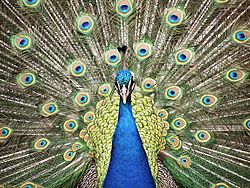
Polifly
This name comes from Dutch pole and vlaie, meaning top of the meadow or atop the swamp. This was the name for the area of Hasbrouck Heights. Polifly Road is a main road connecting Hackensack and Hasbrouck Heights.
Pompton
Some sources say this name means a place where they catch soft fish.
Paulus Hook
Paulus Hook was a tidal island. The Lenape called it Arresick. In 1630, Michael Pauw claimed this land for his settlement, Pavonia. It was named after his agent, who built a hut and ferry landing there. Hoek or hoeck means a point of land.
Preakness
This name comes from the Munsee language. It means quail woods. Another idea is that it means young buck.
Ramapo
The name for the mountains, river, and towns means underneath the rock.
Raritan
The people, river, bay, and towns get their name from Naraticong. This means river beyond the island, possibly referring to Staten Island. Some believe it comes from Roaton or Raritanghe, a tribe that moved from across the Hudson River.
Another idea is that Raritan is a Dutch way of saying wawitan or rarachons. These mean forked river or stream overflows.
Sand Hoek
Sometimes called Sand Punt, this is a peninsula. Most settlers sailing to Fort Amsterdam, Fort Orange, Staten Eylandt, Lange Eylandt, and Bergen would sail around it before entering The Narrows.
Schraalenburgh
This name means Barren Hills, as it was built on a barren ridge. Two churches still use this name today.
Secaucus
This name comes from Sukit meaning black and achgook meaning snake. So, it means black snakes. Locally, it's pronounced "SEE-kaw-cus". Snake Hill, in Secaucus, is a hill in the middle of the Meadowlands.
Sicomac
This name is said to mean resting place for the departed or happy hunting ground. This area of Wyckoff was traditionally a burial place for many Native Americans.
Staaten Eylandt
The Lenape knew this island as Aquehonga, Manacknong, and Eghquaons. The colonists named it after the governing body of the 17th-century United Provinces of the Netherlands, called The States-General.
Tantaqua
This was the Lenape name for Overpeck Creek. It was a camp site for the Hackensack tribe, named after one of their chiefs.
Tappan
This name refers to the region around Palisades Interstate Park and its people. The Dutch spelled it as Tappaen. It might come from Tuphanne meaning cold water.
It's more likely related to petapan meaning dawn. This connects to the Wappinger people, whose name means people of the east or easterners.
Teaneck
The origin and meaning of this name are not certain. It might mean the woods. Another idea is from the Dutch "Tiene Neck", meaning "neck where there are willows".
Tenafly
This name comes from Dutch ten and vlaie, meaning Ten Swamps. Settlers gave this name in 1688.
Watchung
This name means place of mountains and describes the three ridges west of the Meadowlands.
Weehawken
Weehawken has several possible meanings. It could mean rocks that look like rows of trees, at the end of (the Palisades or a stream), or place of gulls.
Interestingly, Peter Minuit, the first governor of New Netherland, sailed to the New World on a ship called the "Seagull" (Het "Meeuwken" in Dutch).
Weequahic
This name means head of the cove.
Vriessendael
Vriessendael was a small bowery or homestead started in 1640 in today's Edgewater. It means Vries' Valley, named after its founder David Pietersen de Vries.
Early Dutch Churches in New Jersey
After the English took control of New Netherland in 1674, Dutch settlers and their families spread out. They built many of the towns and cities we know today. The Dutch Reformed Church was very important in this growth. People settled along the Hudson River in the north, through New York Harbor, and down to the Raritan River in the south. This area was called the "Dutch Belt" by George Washington.
Here are some of the early Dutch Reformed Churches established:
| Year | Congregation |
|---|---|
| 1660 | Bergen at Bergen Square, now Jersey City |
| 1693 | Acquackanonk in Passaic |
| 1694 | Tappan |
| 1696 | Hackensack |
| 1699 | Brick in Marlboro |
| 1700 | Second River in Belleville |
| 1703 | Six Mile Run |
| 1710 | Ponds in Oakland |
| 1717 | New Brunswick |
| 1717 | Schaghticoke |
| 1720 | Fairfield |
| 1724 | Schraalenburgh now Dumont |
| 1725 | Paramus |
| 1727 | Harlingen |
| 1736 | Pompton Plains |
| 1740 | Ramapo in Mahwah |
| 1755 | Totowa in Paterson |
| 1756 | Montville |
| 1770 | Ridgefield in the English Neighborhood |
See also
- Toponymy of New Netherland
- Etymologies of place names in Hudson County, New Jersey
- New Netherland settlements
- North Jersey
- Gateway Region


